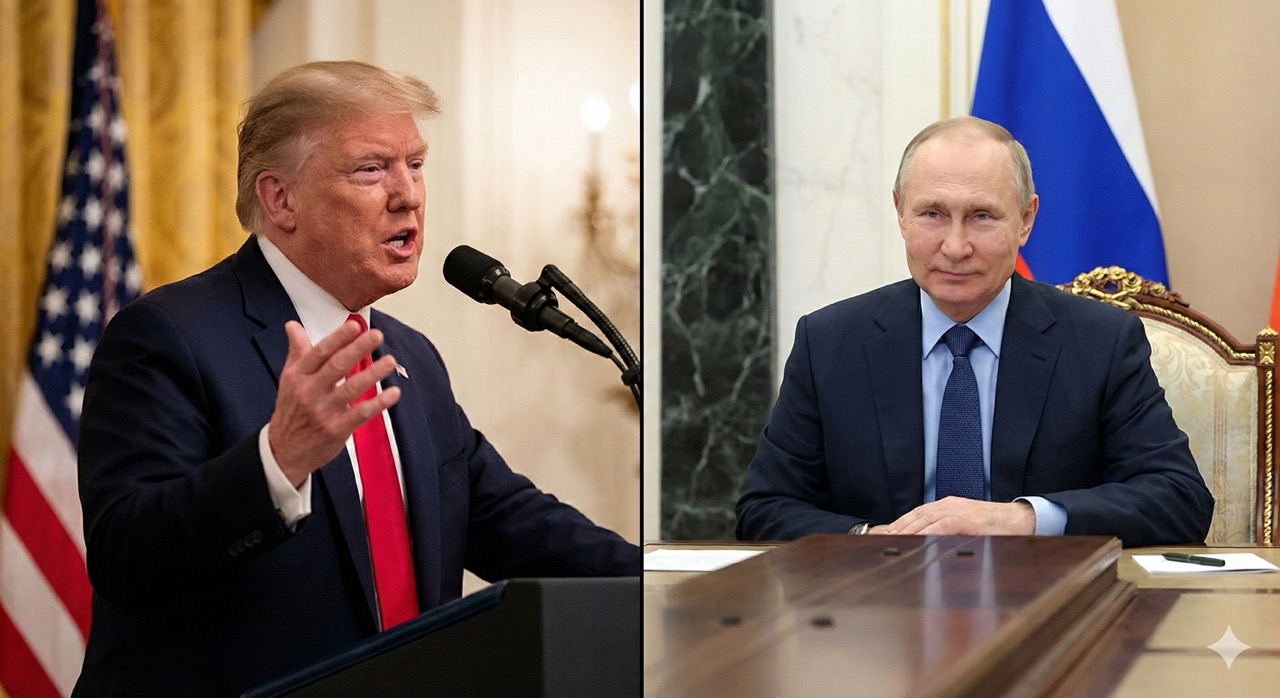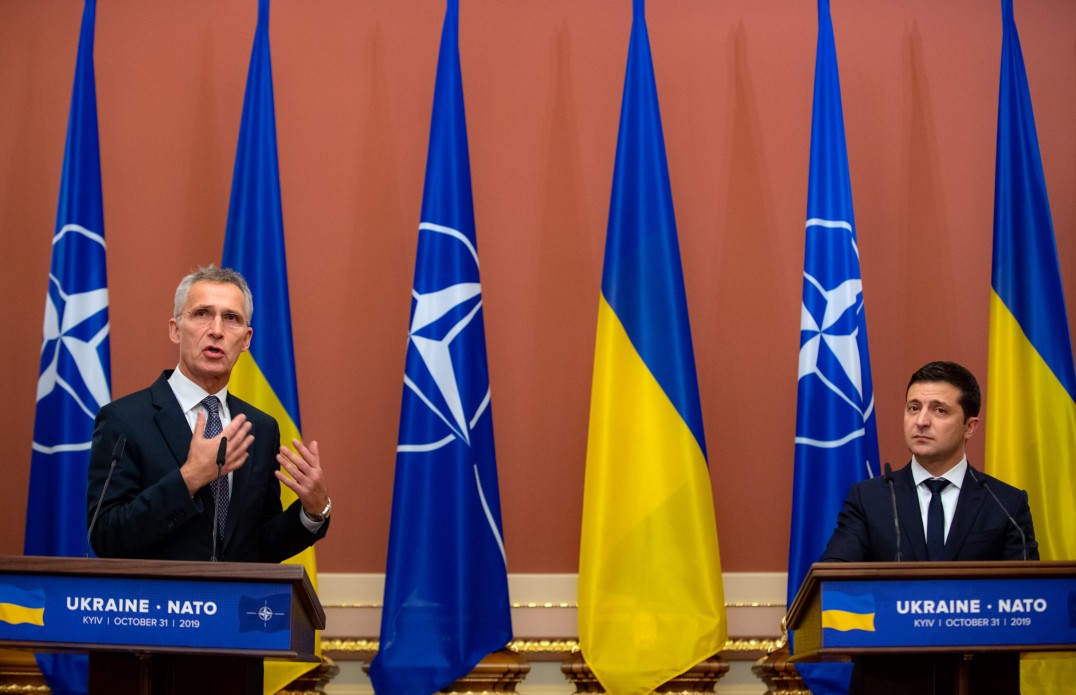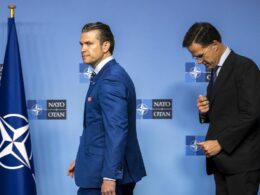After nearly four years of brutal warfare, Russia is being offered peace terms more favorable than those it rejected when its military position was far stronger.
In March 2022, Istanbul peace talks proposed leaving Crimea's status "to be clarified within 15 years"-ambiguous language that avoided formal recognition. Russia walked away, gambling that continued war would deliver better terms.
Now, with hundreds of thousands of casualties and massive equipment losses, Trump's 28-point plan gives Moscow what it couldn't win: immediate recognition of Crimea as "de facto Russian," Ukrainian military restrictions, a constitutional NATO ban, and security guarantees that void if Ukraine tries to retake its territory.
The plan's genesis traces to August's Alaska summit, where Trump met Putin expecting to pressure Russia toward a ceasefire. Instead, Trump emerged adopting Putin's preferred approach: skip immediate ceasefire, move directly to "comprehensive peace" addressing Russia's territorial, military, and NATO demands.
What followed were months of quiet US-Russia bilateral talks that produced a framework decidedly favorable to Moscow, according to the Wall Street Journal.
The timing amplifies the pressure. Just nine days before the plan landed in Kyiv, Ukraine's anti-corruption agencies exposed a $100 million kickback scheme at the state nuclear company-forcing two ministers' suspension and sending President Volodymyr Zelenskyy's former business partner fleeing the country. Trump now demands Ukraine sign by Thanksgiving while its government faces calls for sweeping resignations.

How Alaska changed Trump's approach to Russia
Trump flew to the 15 August Alaska summit telling reporters his main goal was an immediate ceasefire-the outcome that would freeze Russia's territorial losses and create pressure for Moscow to negotiate from weakness.
After nearly three hours with Putin, Trump reversed himself, writing on social media that "the best way to end the horrific war between Russia and Ukraine is to go directly to a Peace Agreement" rather than pursuing a ceasefire first. Trump had adopted Putin's framework: skip the immediate ceasefire Russia didn't want, and move straight to "comprehensive peace" on Putin's terms.
Subsequently, Trump came away "renewed in his belief that Putin wanted to make a deal," while Putin's maximalist demands never shifted. The summit achieved Putin's objective: shifting Trump's framework from pressuring Russia to accept losses, toward pressuring Ukraine to accept concessions.
When the plan emerged, European officials admitted they were "caught by surprise." EU foreign policy chief Kaja Kallas stated the obvious: "We haven't heard of any concessions on the Russian side."
The corruption crisis that weakened Ukraine's hand
As the 28-point plan neared completion, Ukraine's internal crisis deepened. Anti-corruption investigators allege Tymur Mindich-Zelenskyy's former business partner-ran a "high-level criminal organization" that embezzled $100 million from energy infrastructure contracts.
Mindich fled Ukraine on 10 November. Raids began on 11 November. Justice Minister Herman Halushchenko was suspended. The Trump peace plan arrived on 20 November, giving Ukraine days to respond while its government faces pressure for sweeping resignations.
Meanwhile, Russia faces new economic pressure from US sanctions targeting major energy companies. But Moscow shows no urgency, maintaining maximalist positions while Trump demands Ukraine decide within days-creating asymmetric pressure that serves Russian interests.
How Russia's demands evolved across three plans
Key patterns in the comparison below:
- Territory: Istanbul delayed Crimea recognition for 15 years. Trump demands immediate "de facto" acceptance of Crimea AND Donetsk and Luhansk.
- Military size: Istanbul negotiations collapsed over troop numbers. Trump's "compromise" of 600,000 is still a 280,000 cut from current forces.
- Security guarantees: Trump's Article 5-style protection voids if Ukraine strikes Russian cities or attempts territorial restoration-effectively prohibiting sovereignty defense.
- NATO: Constitutional ban plus permanent exclusion-Moscow's core 2014 demand, now delivered by Washington.
Three peace plans compared
| Zelenskyy's 10-Point Plan (Nov 2022) |
Istanbul Communiqué (March-April 2022) |
Trump 28-Point Plan (Nov 2025) |
| TERRITORY | ||
| Full restoration to 1991 borders (pre-2014). Complete return of Crimea and all occupied territories. | Crimea status "clarified within 15 years." De facto Russian control but no formal recognition. | Point 21: Ukraine recognizes Crimea, Donetsk, Luhansk as "de facto Russian." Ukrainian forces withdraw from parts of Donetsk to create DMZ internationally recognized as Russian territory. |
| MILITARY SIZE | ||
| No limits on armed forces. | Russia demanded: 85,000 Ukraine proposed: 250,000 Unresolved |
Point 6: Capped at 600,000 (down from current 880,000 as stated by Zelenskyy in January 2025). |
| WEAPONS LIMITS | ||
| None. | Russia demanded: 40km missile range, 342 tanks Ukraine proposed: 280km range, 800 tanks Unresolved |
Ukraine must relinquish all long-range weapons capable of striking Moscow or St. Petersburg. |
| NATO STATUS | ||
| Ukraine keeps right to join NATO • Constitutional aspiration remains • NATO path stays open |
Ukraine offers permanent neutrality • No NATO membership • No foreign bases • No foreign exercises |
Point 7: Ukraine enshrines non-membership in constitution Point 8: No NATO troops on Ukrainian soil = Permanent constitutional ban |
| SECURITY GUARANTEES | ||
| Ukraine seeks robust guarantees to prevent future Russian aggression • Modeled on collective defense • Details not specified |
Proposed guarantors: US, UK, France, China, Russia, Türkiye PROBLEM: Russia demanded unanimous agreement = Russia gets veto power Why it failed: Veto made guarantees meaningless |
Points 5, 10, 22: NATO Article 5-style guarantees BUT VOID IF: • Ukraine strikes Moscow/St. Petersburg • Ukraine invades Russia • Ukraine tries to retake occupied territory by force = Guarantees disappear when Ukraine needs them most |
| JUSTICE & ACCOUNTABILITY | ||
| • Special tribunal for war crimes • Russian reparations for damage caused • Full accountability for aggression |
Not addressed in negotiations. | Point 25: Full amnesty for all parties for actions during the war • No war crimes prosecutions • No reparations claims • Putin (wanted by ICC for child deportation) gets immunity = Complete impunity |
| KEY ADDITIONAL TERMS | ||
| • Nuclear safety (Zaporizhzhia NPP) • Food security • POW exchange |
• EU membership allowed • Direct negotiations between presidents required to finalize • Never reached final agreement |
• EU membership allowed • $100B Russian assets for reconstruction (US gets 50% profit) • Zaporizhzhia NPP electricity: 50-50 split • Russia returns to G8 • Elections within 100 days |
Ukraine's response: "Not a third invasion"
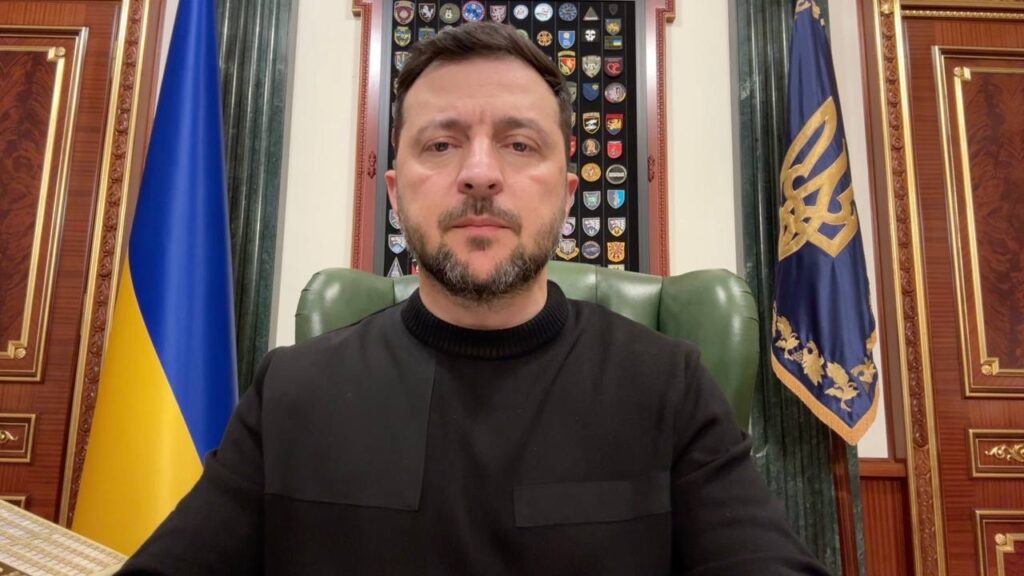
Zelenskyy struck a measured tone in his evening address, saying Ukrainian and US teams would work on the proposals. But he emphasized Ukraine needs "a real peace-one that will not be broken by a third invasion"-a direct reference to the pattern where Russia uses "peace" to prepare for larger wars.
At the UN Security Council, Deputy Permanent Representative Khrystyna Hayovyshyn drew explicit red lines that directly contradict Trump's plan:
Trending Now
- "There will never be any recognition-formal or otherwise-of Ukrainian territory temporarily occupied by the Russian Federation as 'Russian'. Our land is not for sale."
- Ukraine "would not accept any limits on its right to self-defense or on the size and capabilities of its armed forces."
- Ukraine "will not tolerate any infringement on its sovereignty, including its sovereign right to choose the alliances it seeks to join."
| Ukraine's Red Line | How Trump Plan Violates It |
| "There will never be any recognition-formal or otherwise-of Ukrainian territory temporarily occupied by the Russian Federation as 'Russian'. Our land is not for sale." | Point 21: Demands Ukraine recognize Crimea, Donetsk, and Luhansk as "de facto Russian." Requires Ukrainian forces to withdraw from parts of Donetsk to create demilitarized zones "internationally recognized as territory belonging to the Russian Federation." |
| "Ukraine would not accept any limits on its right to self-defense or on the size and capabilities of its armed forces." | Point 6: Caps armed forces at 600,000 (down from current 880,000). Point 10: Voids security guarantees if Ukraine strikes Moscow/St. Petersburg or invades Russia. Point 22: Voids guarantees if Ukraine attempts to retake occupied territories by force. = Restricts military size AND prohibits using force to restore sovereignty. |
| "Ukraine will not tolerate any infringement on its sovereignty, including its sovereign right to choose the alliances it seeks to join." | Point 7: Requires Ukraine to enshrine non-NATO membership in its constitution. NATO must add provision permanently excluding Ukraine. Point 8: Prohibits NATO troops on Ukrainian soil. = Removes Ukraine's right to choose alliances through constitutional mandate AND forces NATO to codify permanent exclusion. |
Many Ukrainian officials describe the terms as "unacceptable" and tantamount to capitulation. European leaders warn any arrangement "cannot be a capitulation."
Moscow's satisfied response signals whose plan this is
Russia's reaction reveals much about the plan's strategic implications. Kirill Dmitriev, who helped draft the proposal, told Axios "we feel that the Russian position is really being heard."
Moscow's enthusiasm for peace talks signals that proposed terms favor Russian strategic goals. Kremlin spokesman Dmitry Peskov maintained that any settlement must eliminate "root causes"-the same language Russia used before Minsk-2 to justify demands for Ukrainian constitutional changes.
Russia hasn't conceded anything; it's simply waited for a US president willing to pressure Ukraine rather than Russia.
The question: Pragmatic peace or strategic defeat?
Trump wants Ukraine to sign by Thanksgiving-creating asymmetric pressure where he pushes Ukraine toward concessions while Russia maintains maximalist demands. The internal Ukrainian crisis and American impatience are doing negotiating work that three years of warfare couldn't accomplish.
Europe scrambles for an alternative response. Leaders warn against "capitulation" but haven't presented a unified counter-proposal. Much depends on whether the EU holds firm or fragments under US pressure for a quick deal.
But the central question isn't whether this deal ends the war. History suggests it won't.
The Minsk agreements of 2014-2015 followed this exact pattern: Russia invaded, the West pushed Ukraine toward "pragmatic compromises," and peace talks gave Moscow breathing room to prepare for full-scale invasion seven years later. Leaked emails from Putin's advisor Vladislav Surkov revealed the strategy explicitly-use "peace" to legitimize territorial seizures, embed Russian influence mechanisms, and build springboards for the next escalation.
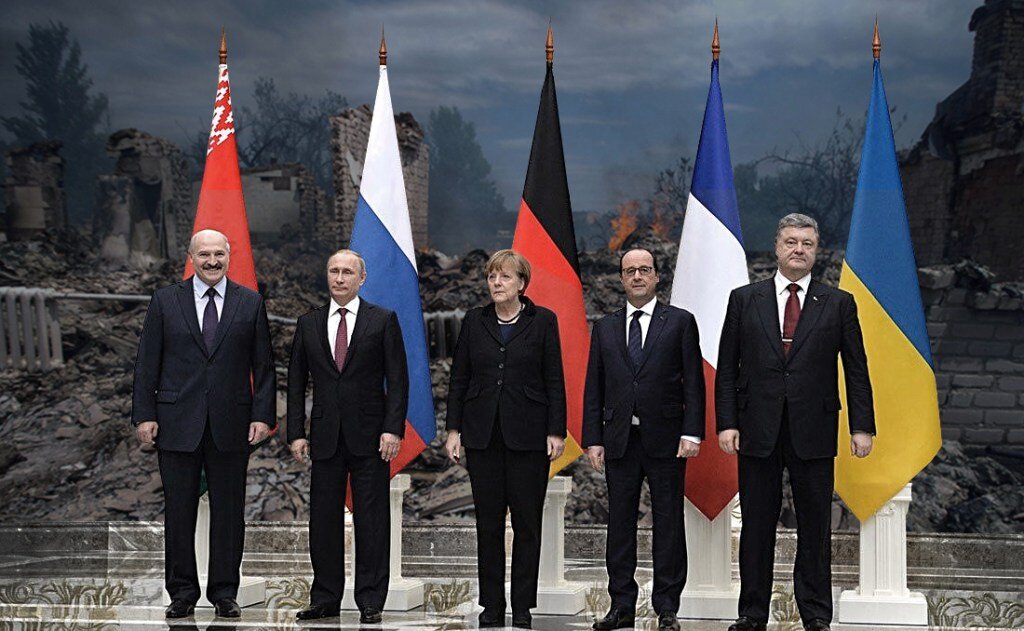
Russia’s last “Ukraine peace deal” led to Europe’s biggest war since WWII. Here’s why this one could be worse.
Surkov himself admitted in 2024 that Minsk-2 "legitimized the first partition of Ukraine" and that "peace is nothing more than the continuation of war by other means."
The Trump plan mirrors that structure: recognize Russian territorial control, limit Ukraine's military capabilities, ban NATO membership, and provide "security guarantees" that void when Ukraine defends itself. Russia emerges with internationally legitimized gains, a weakened neighbor, and proof that aggression plus patience defeats Western resolve.
The difference between 2015 and 2025? Russia would exit this "peace" with a battle-tested military, 500,000+ mobilized troops, and deeper ties to China, Iran, and North Korea. Western intelligence warns Putin could be preparing for broader European confrontation within five years-emboldened by every deal that rewarded aggression.
For Ukraine, the choice is stark: accept terms that trade immediate crisis relief for long-term strategic vulnerability, or maintain red lines while government crisis deepens and US support wavers.
For the West, the question is whether Trump's conviction that personal rapport with Putin can deliver quick wins serves American interests-or whether it repeats the Minsk trap at continental scale, demonstrating that nuclear blackmail works, conquest pays, and each "peace" simply sets the stage for the next invasion.
The evidence from 2015 to 2022 answers that question. Russia doesn't negotiate peace deals. It negotiates launchpads.
Three peace plans compared
| Zelenskyy's 10-Point Plan (Nov 2022) |
Istanbul Communiqué (March-April 2022) |
Trump 28-Point Plan (Nov 2025) |
| TERRITORY | ||
| Full restoration to 1991 borders (pre-2014). Complete return of Crimea and all occupied territories. | Crimea status "clarified within 15 years." De facto Russian control but no formal recognition. | Point 21: Ukraine recognizes Crimea, Donetsk, Luhansk as "de facto Russian." Ukrainian forces withdraw from parts of Donetsk to create DMZ internationally recognized as Russian territory. |
| MILITARY SIZE | ||
| No limits on armed forces. | Russia demanded: 85,000 Ukraine proposed: 250,000 Unresolved |
Point 6: Capped at 600,000 (down from current 880,000 as stated by Zelenskyy in January 2025). |
| WEAPONS LIMITS | ||
| None. | Russia demanded: 40km missile range, 342 tanks Ukraine proposed: 280km range, 800 tanks Unresolved |
Ukraine must relinquish all long-range weapons capable of striking Moscow or St. Petersburg. |
| NATO STATUS | ||
| Ukraine keeps right to join NATO • Constitutional aspiration remains • NATO path stays open |
Ukraine offers permanent neutrality • No NATO membership • No foreign bases • No foreign exercises |
Point 7: Ukraine enshrines non-membership in constitution Point 8: No NATO troops on Ukrainian soil = Permanent constitutional ban |
| SECURITY GUARANTEES | ||
| Ukraine seeks robust guarantees to prevent future Russian aggression • Modeled on collective defense • Details not specified |
Proposed guarantors: US, UK, France, China, Russia, Turkey PROBLEM: Russia demanded unanimous agreement = Russia gets veto power Why it failed: Veto made guarantees meaningless |
Points 5, 10, 22: NATO Article 5-style guarantees BUT VOID IF: • Ukraine strikes Moscow/St. Petersburg • Ukraine invades Russia • Ukraine tries to retake occupied territory by force = Guarantees disappear when Ukraine needs them most |
| JUSTICE & ACCOUNTABILITY | ||
| • Special tribunal for war crimes • Russian reparations for damage caused • Full accountability for aggression |
Not addressed in negotiations. | Point 25: Full amnesty for all parties for actions during the war • No war crimes prosecutions • No reparations claims • Putin (wanted by ICC for child deportation) gets immunity = Complete impunity |
| KEY ADDITIONAL TERMS | ||
| • Nuclear safety (Zaporizhzhia NPP) • Food security • POW exchange |
• EU membership allowed • Direct negotiations between presidents required to finalize • Never reached final agreement |
• EU membership allowed • $100B Russian assets for reconstruction (US gets 50% profit) • Zaporizhzhia NPP electricity: 50-50 split • Russia returns to G8 • Elections within 100 days |
| Ukraine's Red Line | How Trump Plan Violates It |
| "There will never be any recognition-formal or otherwise-of Ukrainian territory temporarily occupied by the Russian Federation as 'Russian'. Our land is not for sale." | Point 21: Demands Ukraine recognize Crimea, Donetsk, and Luhansk as "de facto Russian." Requires Ukrainian forces to withdraw from parts of Donetsk to create demilitarized zones "internationally recognized as territory belonging to the Russian Federation." |
| "Ukraine would not accept any limits on its right to self-defense or on the size and capabilities of its armed forces." | Point 6: Caps armed forces at 600,000 (down from current 880,000). Point 10: Voids security guarantees if Ukraine strikes Moscow/St. Petersburg or invades Russia. Point 22: Voids guarantees if Ukraine attempts to retake occupied territories by force. = Restricts military size AND prohibits using force to restore sovereignty. |
| "Ukraine will not tolerate any infringement on its sovereignty, including its sovereign right to choose the alliances it seeks to join." | Point 7: Requires Ukraine to enshrine non-NATO membership in its constitution. NATO must add provision permanently excluding Ukraine. Point 8: Prohibits NATO troops on Ukrainian soil. = Removes Ukraine's right to choose alliances through constitutional mandate AND forces NATO to codify permanent exclusion. |

